Category: Uncategorized
 Look at that, I made some robot art.
Actually, if we look deeper, that’s a bit of a lie. (Don’t tell Santa! I’m on the “nice” list so far this year!) Keep reading to understand why.
Continue reading
Look at that, I made some robot art.
Actually, if we look deeper, that’s a bit of a lie. (Don’t tell Santa! I’m on the “nice” list so far this year!) Keep reading to understand why.
Continue reading 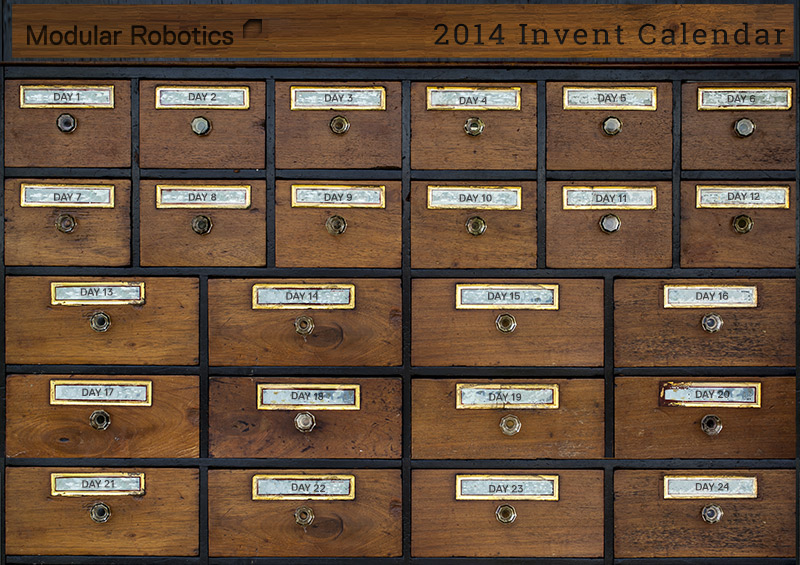 Seasons’ Greetings, budding inventors!
The holidays are upon us once again. Snowmen, candy-canes, advent calendars, and little lights abound. And we’d like introduce you to something new. This holiday season, celebrate the spirit of inquiry and invention with our Invent Calendar!
Every day, we’ll be sharing an exciting bit of intellectual wonder. Follow Modular Robotics on Facebook and Twitter to discover daily challenges, robot builds, videos and curiosity-driven activities.
Mark your calendars and check in to see what’s behind the doors of the Modular Robotics Invent Calendar!
Seasons’ Greetings, budding inventors!
The holidays are upon us once again. Snowmen, candy-canes, advent calendars, and little lights abound. And we’d like introduce you to something new. This holiday season, celebrate the spirit of inquiry and invention with our Invent Calendar!
Every day, we’ll be sharing an exciting bit of intellectual wonder. Follow Modular Robotics on Facebook and Twitter to discover daily challenges, robot builds, videos and curiosity-driven activities.
Mark your calendars and check in to see what’s behind the doors of the Modular Robotics Invent Calendar! 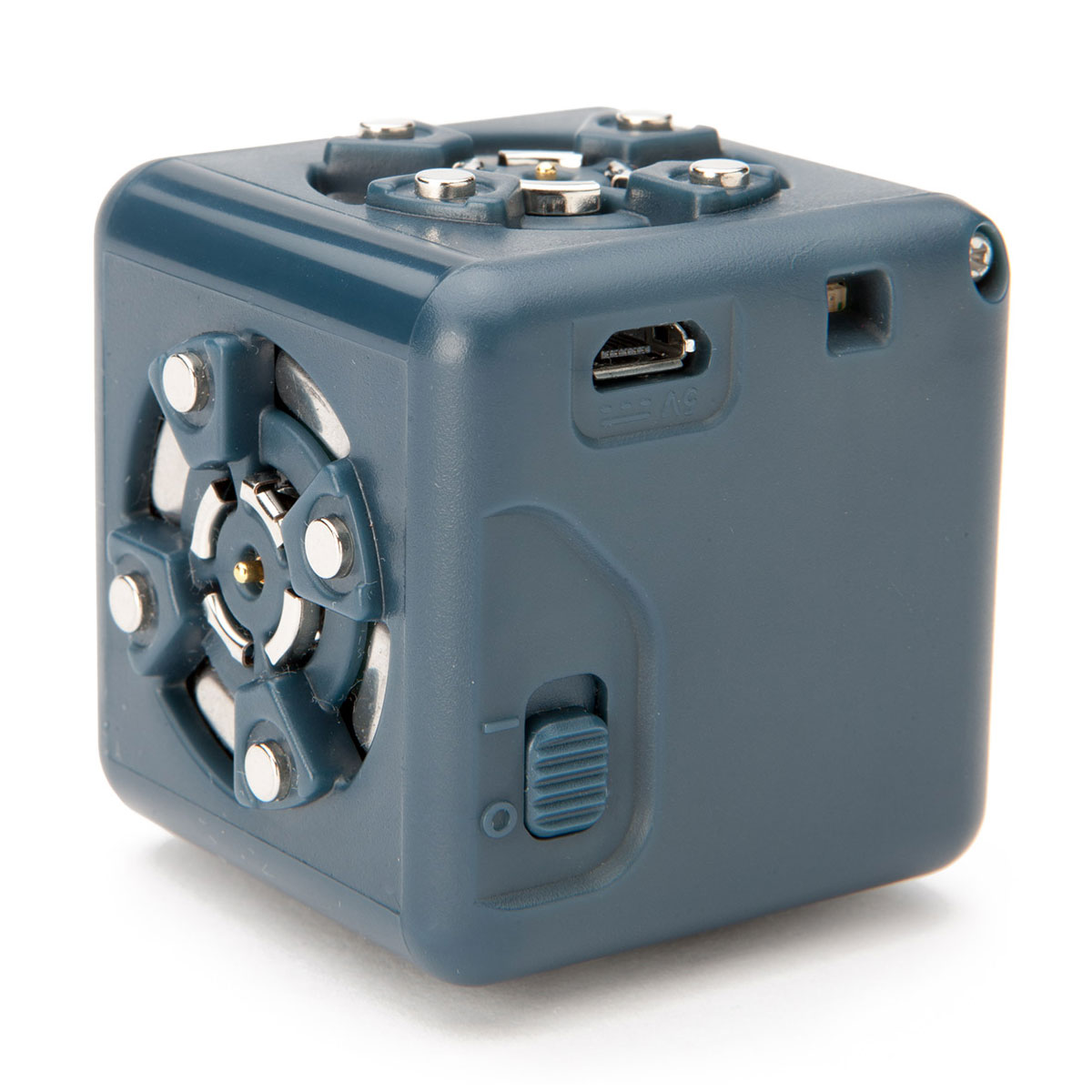 The new Battery Cubelet lasts about 30% longer than the old one and it charges more quickly too. Turns out it’s also a lot easier for us to manufacture: we generate fewer scrapped and wasted parts with the new design than with the old.
Back in 2010 when we launched the old Battery Cubelet, most of the little robots made their way to science centers, children’s museums, and schools where they were often in use for all-day sessions. We chose to make the battery cells removable so that these places could buy a bunch of extra cells to keep Cubelets going for a huge day instead of having to buy a bunch of extra Battery Cubelets. It turned out, though, that swapping batteries in and out of Cubelets was just straight annoying and the chargers were clunky to use and slow.
One of the more unique aspects of Cubelets is that it’s a distributed system. When you build a typical robot, you build a plastic and metal body, and then you switch your attention to a laptop and program the brain. With Cubelets, you snap together a bunch of little brain modules that all work together and form a body. If you’re OK with carrying the metaphor a little further, Cubelets most certainly do have a heart: every robot needs a Battery Cubelet to provide power — without it, a construction is dead. That’s why this upgrade is such a big deal.
The new Battery Cubelet is available now on it’s own, as part of the SIX kit, and as part of the big TWENTY kit. Psyched! We didn’t launch many new Cubelets this year, but the new Battery Cubelet is a big one.
The new Battery Cubelet lasts about 30% longer than the old one and it charges more quickly too. Turns out it’s also a lot easier for us to manufacture: we generate fewer scrapped and wasted parts with the new design than with the old.
Back in 2010 when we launched the old Battery Cubelet, most of the little robots made their way to science centers, children’s museums, and schools where they were often in use for all-day sessions. We chose to make the battery cells removable so that these places could buy a bunch of extra cells to keep Cubelets going for a huge day instead of having to buy a bunch of extra Battery Cubelets. It turned out, though, that swapping batteries in and out of Cubelets was just straight annoying and the chargers were clunky to use and slow.
One of the more unique aspects of Cubelets is that it’s a distributed system. When you build a typical robot, you build a plastic and metal body, and then you switch your attention to a laptop and program the brain. With Cubelets, you snap together a bunch of little brain modules that all work together and form a body. If you’re OK with carrying the metaphor a little further, Cubelets most certainly do have a heart: every robot needs a Battery Cubelet to provide power — without it, a construction is dead. That’s why this upgrade is such a big deal.
The new Battery Cubelet is available now on it’s own, as part of the SIX kit, and as part of the big TWENTY kit. Psyched! We didn’t launch many new Cubelets this year, but the new Battery Cubelet is a big one. 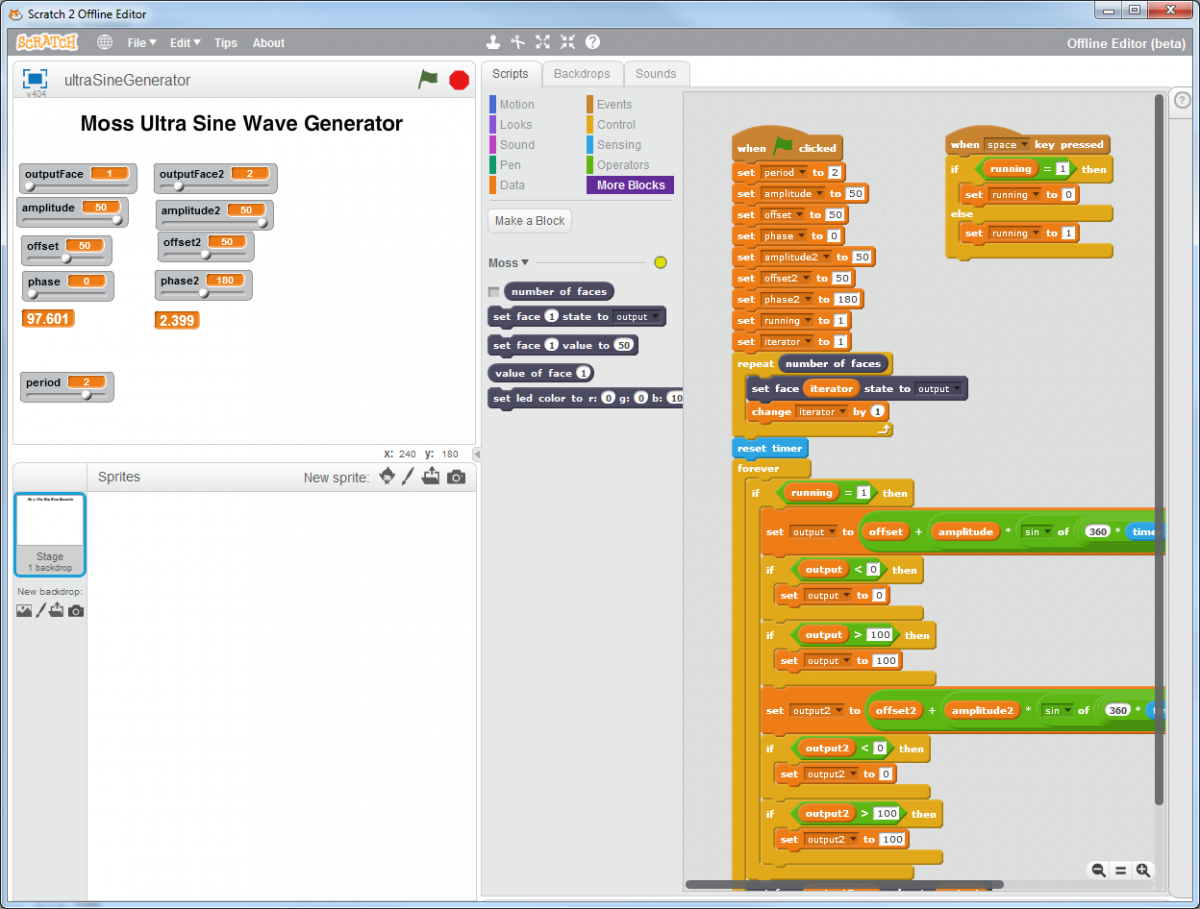 If we pursue this robot design the next level of development would also happen in Scratch. We’d boil down all these optimal parameters to a simple forward/back/left/right interface tied to arrow keys and drive around for a while! Only then would we finally transfer into textual coding, either into firmware via MOSS Flash or a dedicated mobile control app to distribute the behavior when a kit ships.
If we pursue this robot design the next level of development would also happen in Scratch. We’d boil down all these optimal parameters to a simple forward/back/left/right interface tied to arrow keys and drive around for a while! Only then would we finally transfer into textual coding, either into firmware via MOSS Flash or a dedicated mobile control app to distribute the behavior when a kit ships. 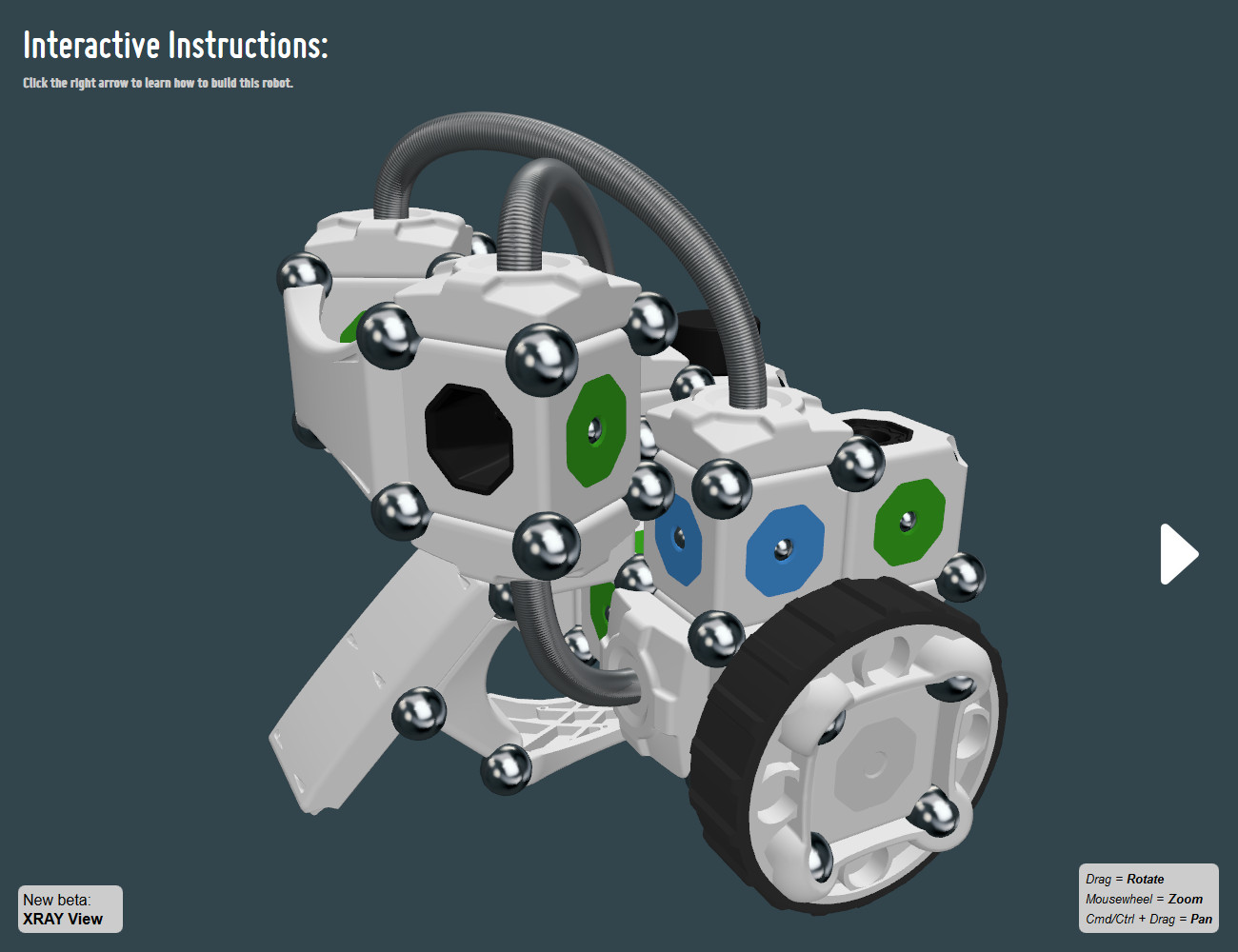
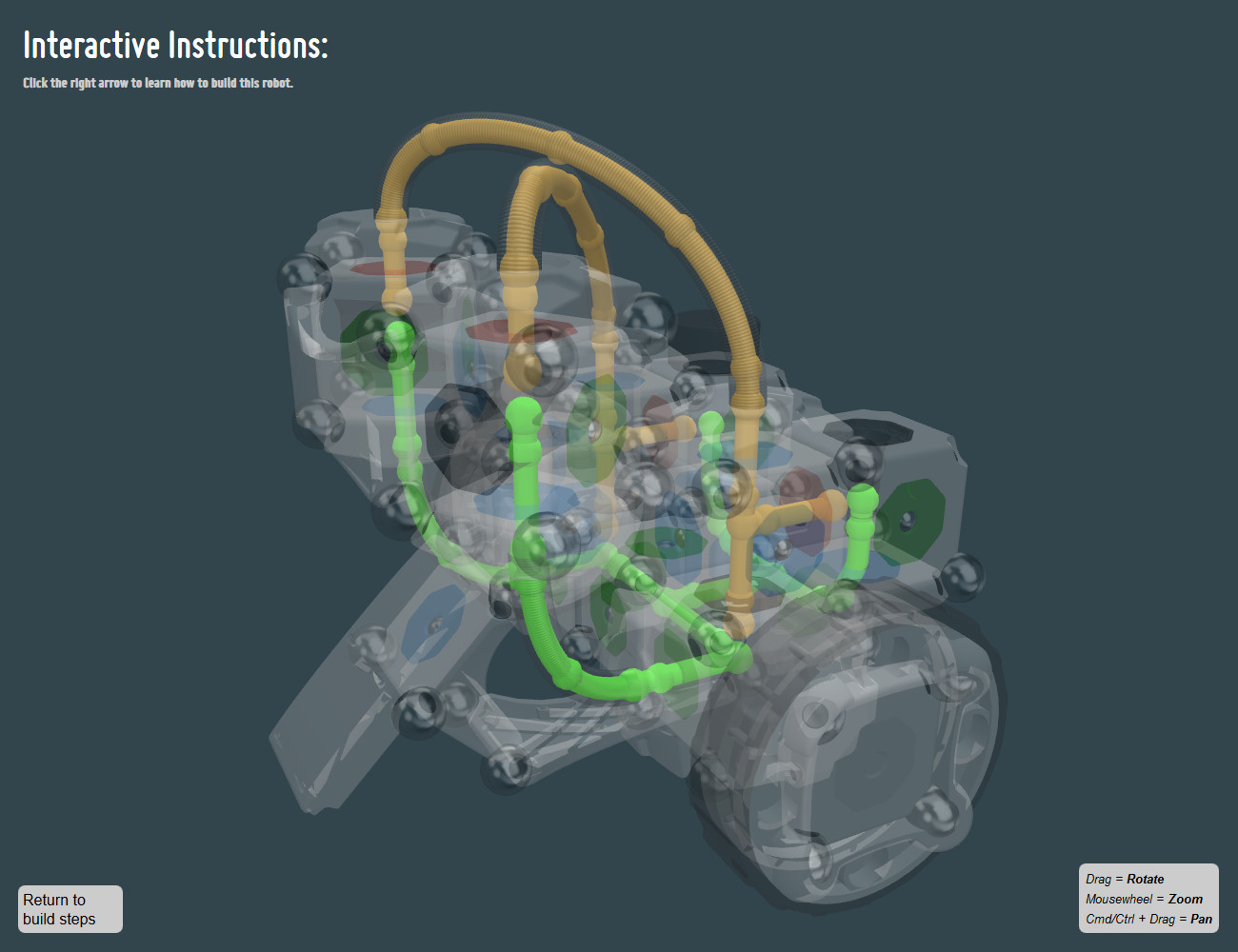 Check out the live Braitenbird page here. Green is power, and orange is data, just like in the new “How to Build” Guide. The bubbles move along the tubes to show how everything flows. We hope that everyone who touches a MOSS kit makes the jump from following instructions to inventing their own unique MOSS bots. Seeing how our example bots are connected inside will be a handy stepping stone to MOSS building proficiency.
By the way, we didn’t just program in the circuits for two dozen robots. We programmed a system so that your web browser understands MOSS, how it works, and how it all connects. Feel free to let your imagination run wild at the possibilities…
Check out the live Braitenbird page here. Green is power, and orange is data, just like in the new “How to Build” Guide. The bubbles move along the tubes to show how everything flows. We hope that everyone who touches a MOSS kit makes the jump from following instructions to inventing their own unique MOSS bots. Seeing how our example bots are connected inside will be a handy stepping stone to MOSS building proficiency.
By the way, we didn’t just program in the circuits for two dozen robots. We programmed a system so that your web browser understands MOSS, how it works, and how it all connects. Feel free to let your imagination run wild at the possibilities…
We’re finishing up the final preparations toward launching our most awesome product ever: the MOSS Huck Tank. I can’t wait until November.
The Huck Tank is the first in the MOSS Artist Series and is designed by Huck Gee. I’ve been in love with Huck’s work ever since seeing the first toys he did with Kidrobot, and I’m super-proud (and still slightly amazed) that he agreed to design a MOSS kit.
The Huck Tank kit has 32 MOSS blocks and is designed to be assembled into a little tank that drives around and shoots things with foam darts. This is a janky hand-painted prototype, but just look at it!
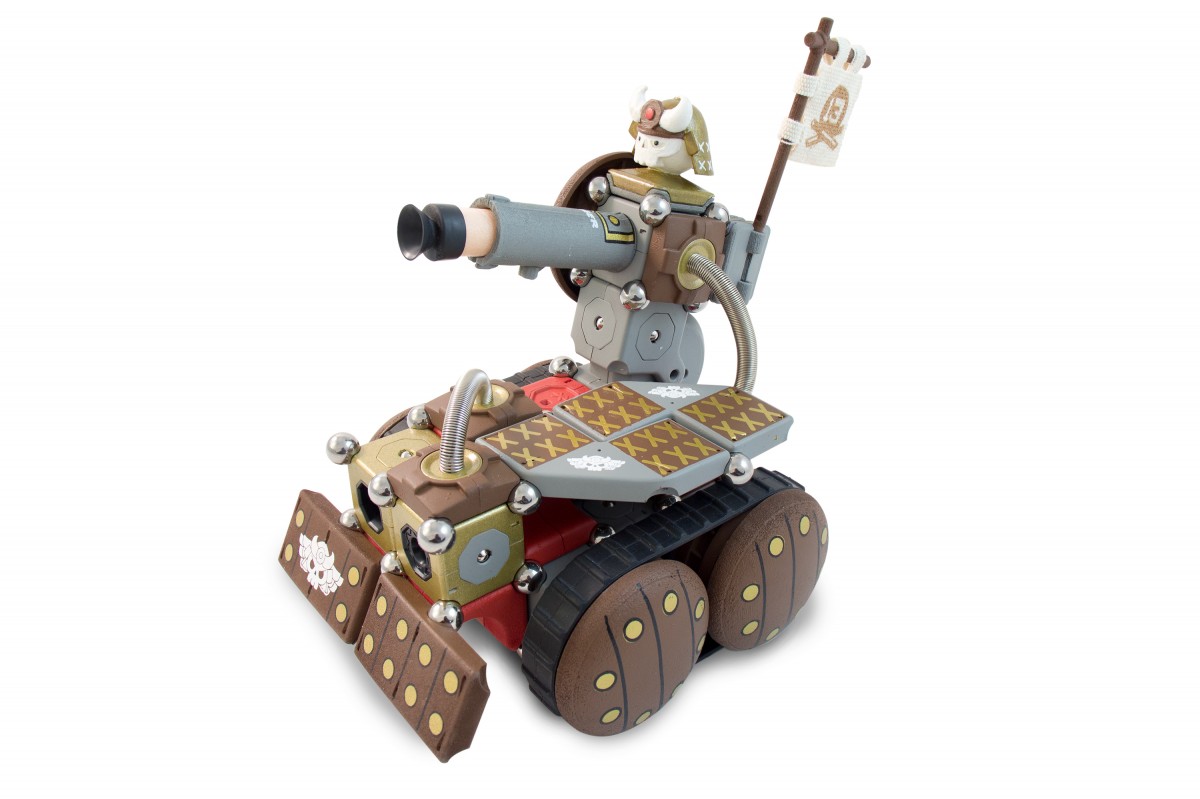
There are two different ways to play with the tank. In autonomous mode, it’ll drive around and avoid obstacles, firing its dart whenever it hears a double clap. Or, download the iOS/Android app and remote control the tank and turret. Of course, you can also build anything you want, or mix and match the Huck Tank modules with your normal MOSS modules to create huge foam dart shooting monster robots.
The white plastic frames that give shape to normal MOSS blocks are injection moulded at one of our suppliers in China. We’ve never been able to injection mould plastic parts in the USA; it’s just always been too expensive. Way too expensive, like we’d need to charge $100 more for a kit expensive. But things have changed: we’re manufacturing the plastic parts that are new in the Huck Tank at an injection moulder in the USA! In Colorado! The supplier is pretty awesome. They’re building the moulds out of aircraft aluminum instead of tool steel, and they should last plenty long. Easier machining in aluminum makes for USA moulds at a competitive (yes, it’s still more expensive, but not double or 10x) price to Chinese manufacturing. Cool.
We offered the Huck Tank as a reward tier on our Kickstarter campaign from six months ago. We’ve shipped out 80% of the MOSS kits from the kickstarter, and the remaining 20% are Huck Tank backers. I’m sorry we’re later than we estimated in the crowdfunding campaign! We expect to ship Huck Tanks in late October 2014, and I’m confident the wait will be worth it.
 I’m writing this post from Atlanta, a land of endless fried vegetables and phenomenally good jazz and brass band music. We’re here for the ISTE 2014 conference. We’ve met some inspiring educators and innovators here, and it’s been great to have our booth on the Exhibition floor as well as have the team giving four presentations during the conference. We’re so excited to have so many chances to connect with educators, give them a chance to try Cubelets and MOSS, and share ideas.
After this I head to Dallas where I’ll be co-managing a really cool and out-of the-box collaboration between our company and the Frontiers of Flight museum. This is big, everyone – while MOSS has been out in the world, this is the first time we’ll be using it for structured education and I’m thrilled to pilot it in a new camp that we are jointly offering with this museum on engineering, robotics, and space! As a bonus, while I’m in Dallas, I’m doing a Radio Disney interview about robots, education, and what we’re doing. I also get to work with with Perot Museum of Nature and Science’s Leaders in Science Teachers, and their Family Discovery day on July 12th.
Then I jet off to Chicago where colleague Donald Ness and I will be talking about how playing with robots can lead to computational thinking and learning about code at CSTA’s 2014 conference.
Once I’m back, I’m slated to be at RAFT Colorado’s Summer Symposium for teacher training, and then doing a full-day teacher STEM experience with robots at Xsci.
It’s a full dance card for Mod Bot Edu, but we’re thrilled to have the opportunity to share our results and work directly with a wider group of awesome and inquisitive educators. We have our eye on a few new places to be and be seen in 2015 so don’t be surprised if you see us hitting the road again then!
I’m writing this post from Atlanta, a land of endless fried vegetables and phenomenally good jazz and brass band music. We’re here for the ISTE 2014 conference. We’ve met some inspiring educators and innovators here, and it’s been great to have our booth on the Exhibition floor as well as have the team giving four presentations during the conference. We’re so excited to have so many chances to connect with educators, give them a chance to try Cubelets and MOSS, and share ideas.
After this I head to Dallas where I’ll be co-managing a really cool and out-of the-box collaboration between our company and the Frontiers of Flight museum. This is big, everyone – while MOSS has been out in the world, this is the first time we’ll be using it for structured education and I’m thrilled to pilot it in a new camp that we are jointly offering with this museum on engineering, robotics, and space! As a bonus, while I’m in Dallas, I’m doing a Radio Disney interview about robots, education, and what we’re doing. I also get to work with with Perot Museum of Nature and Science’s Leaders in Science Teachers, and their Family Discovery day on July 12th.
Then I jet off to Chicago where colleague Donald Ness and I will be talking about how playing with robots can lead to computational thinking and learning about code at CSTA’s 2014 conference.
Once I’m back, I’m slated to be at RAFT Colorado’s Summer Symposium for teacher training, and then doing a full-day teacher STEM experience with robots at Xsci.
It’s a full dance card for Mod Bot Edu, but we’re thrilled to have the opportunity to share our results and work directly with a wider group of awesome and inquisitive educators. We have our eye on a few new places to be and be seen in 2015 so don’t be surprised if you see us hitting the road again then!
 My goal at Modular Robotics is to convince the world that robots are a necessary component to our advancement as a species.
Naturally, you might be wondering if I’ve been sniffing too many solder fumes to posit such a hypothesis. The reality is that I spend my days pushing pixels rather than completing circuits. Occasionally, I get out from the glow of my Macbook and meet real people in the realm of the third dimension. After the initial shock of human contact wears off, I often find myself answering this question… “What are these robots for?”
If you’ve stumbled across this post… you should know that Modular Robotics makes robot constructions systems that are deceptively educational. By this, I mean our robot toys are a lot of fun and have some great life skills embedded into the play experience. Normally, I answer this question with something akin to “Modular Robotics makes robot construction systems that are designed to help kids understand the entangled nature of our world. Our systems are built to be fun and educational, so kids can develop an intuitive understanding of complex systems and design concepts.”
All of that is true, but it neglects to impart the vision of what I hope we can accomplish with Modular Robotics. I do what I do because I believe that these robot toys are the opening move in a game of chess that could result in humanity reaching fantastic new heights. I believe robots are a keystone technology in the progression of our species that will free up time necessary to solve our greatest challenges and provide the mechanisms we need to someday reach distant worlds.
This is a big concept and I don’t expect that this post will have swayed you in the slightest. It will take series of posts to discuss in detail. This post is to introduce myself and give you a peek into one of the many reasons why we do what we do at Modular Robotics.
My goal at Modular Robotics is to convince the world that robots are a necessary component to our advancement as a species.
Naturally, you might be wondering if I’ve been sniffing too many solder fumes to posit such a hypothesis. The reality is that I spend my days pushing pixels rather than completing circuits. Occasionally, I get out from the glow of my Macbook and meet real people in the realm of the third dimension. After the initial shock of human contact wears off, I often find myself answering this question… “What are these robots for?”
If you’ve stumbled across this post… you should know that Modular Robotics makes robot constructions systems that are deceptively educational. By this, I mean our robot toys are a lot of fun and have some great life skills embedded into the play experience. Normally, I answer this question with something akin to “Modular Robotics makes robot construction systems that are designed to help kids understand the entangled nature of our world. Our systems are built to be fun and educational, so kids can develop an intuitive understanding of complex systems and design concepts.”
All of that is true, but it neglects to impart the vision of what I hope we can accomplish with Modular Robotics. I do what I do because I believe that these robot toys are the opening move in a game of chess that could result in humanity reaching fantastic new heights. I believe robots are a keystone technology in the progression of our species that will free up time necessary to solve our greatest challenges and provide the mechanisms we need to someday reach distant worlds.
This is a big concept and I don’t expect that this post will have swayed you in the slightest. It will take series of posts to discuss in detail. This post is to introduce myself and give you a peek into one of the many reasons why we do what we do at Modular Robotics. 
